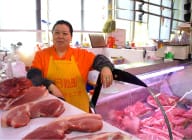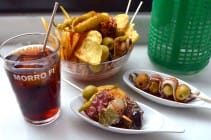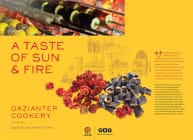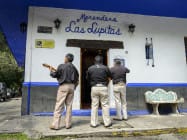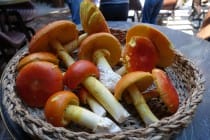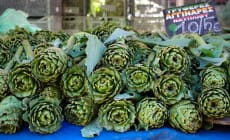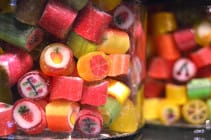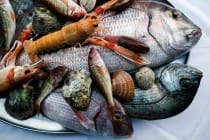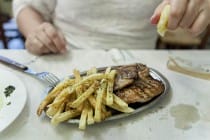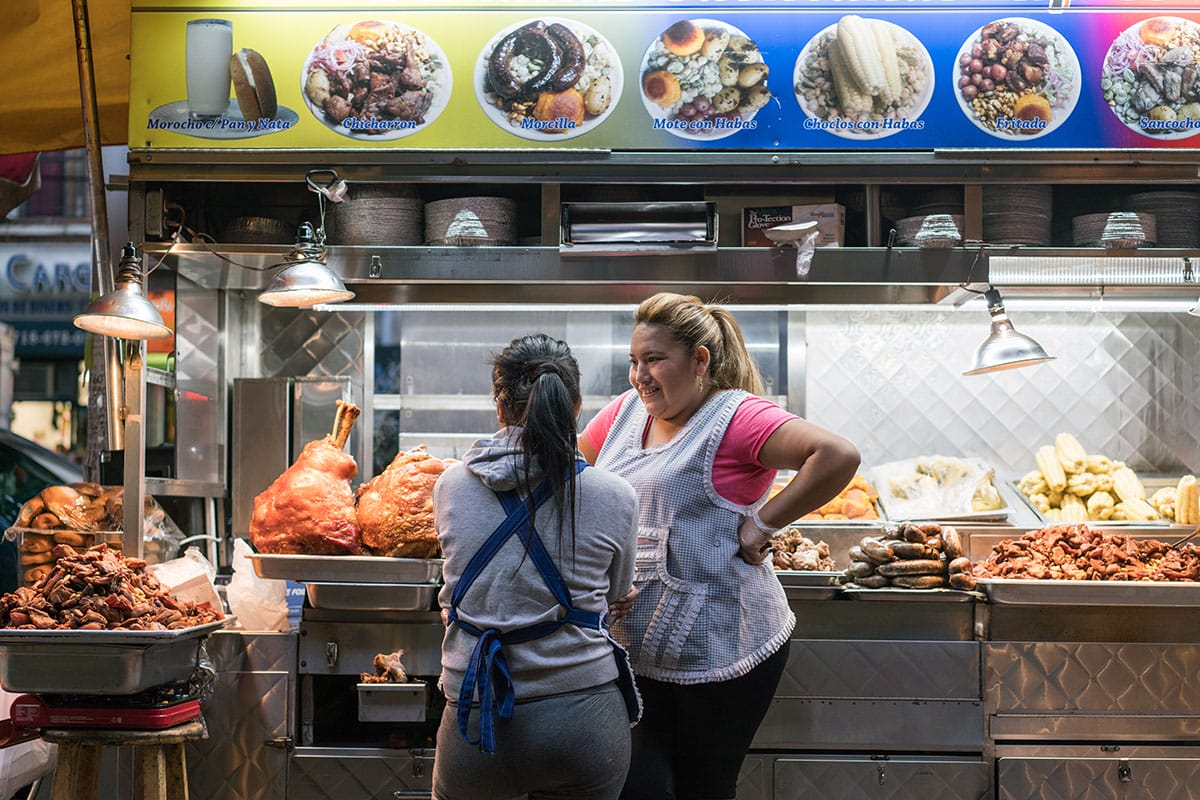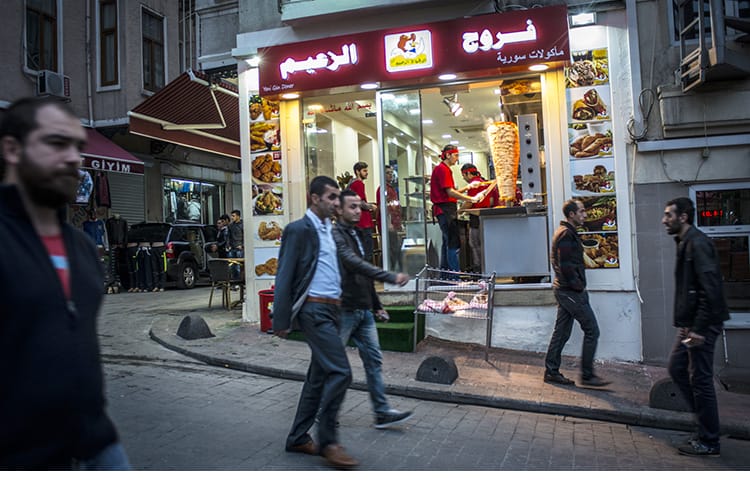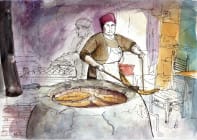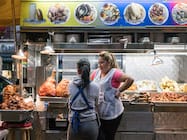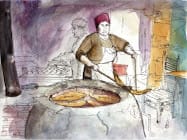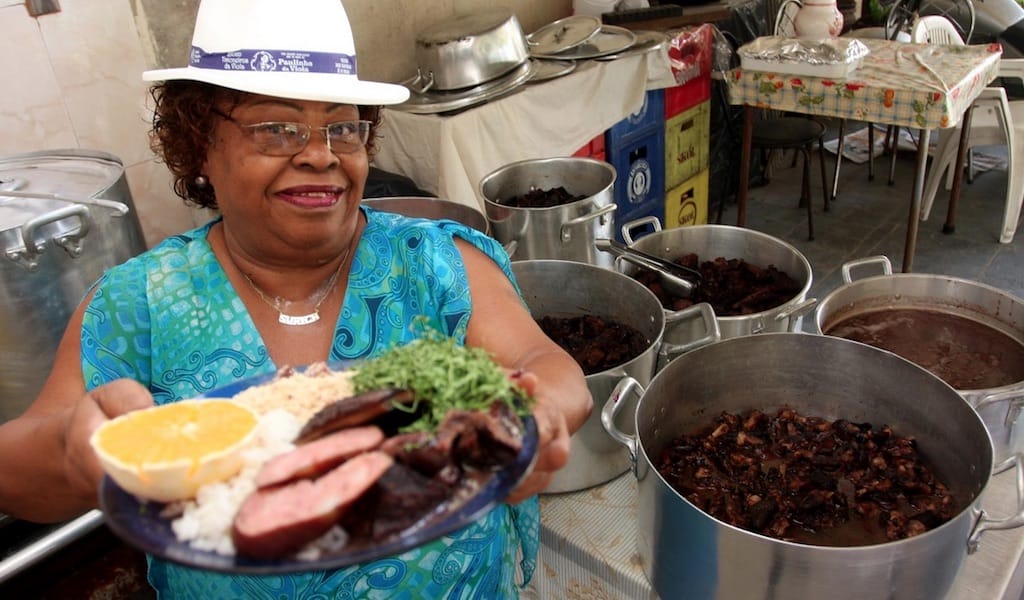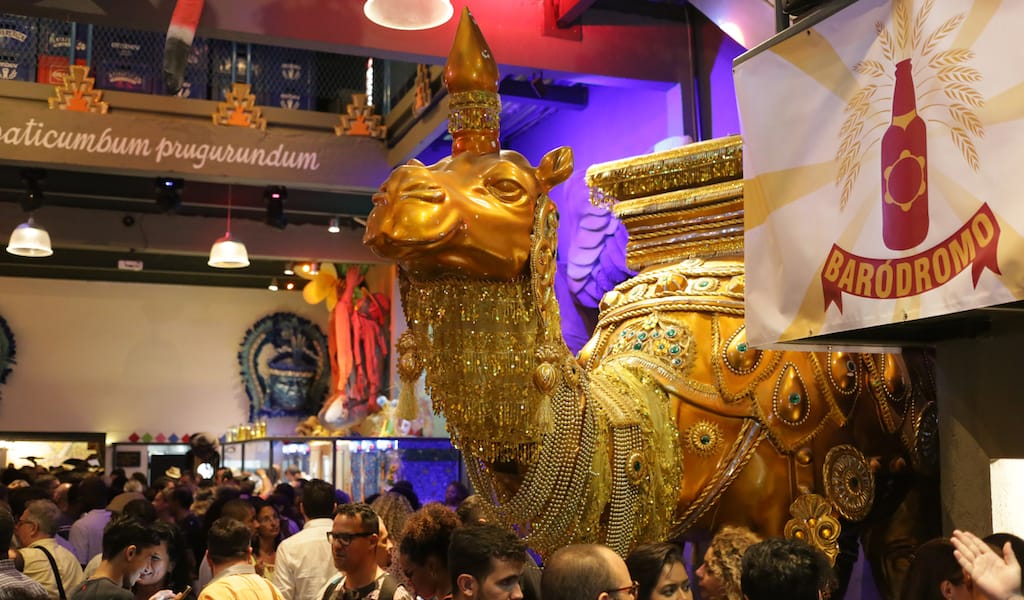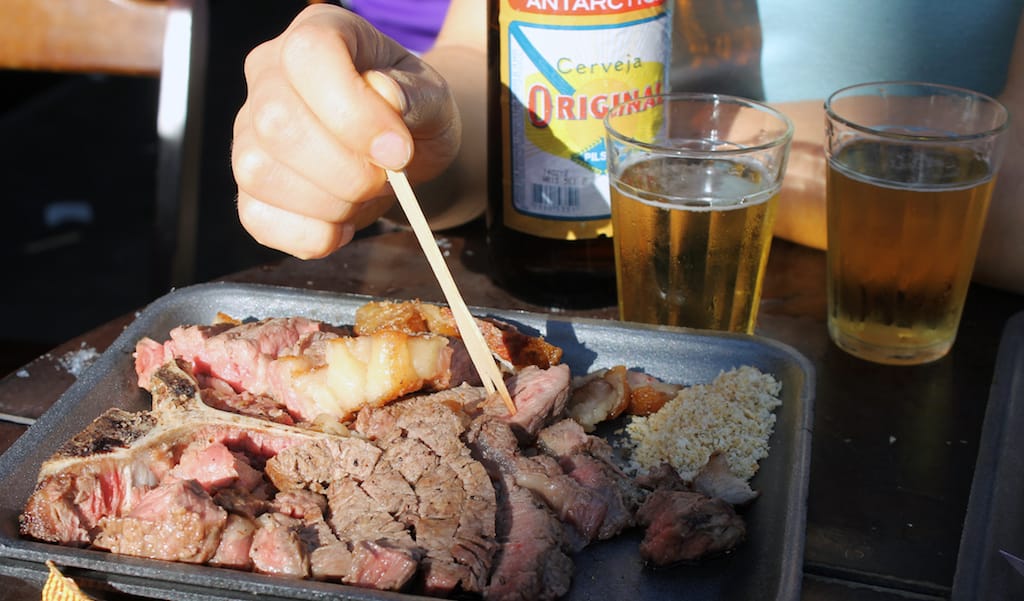Editor’s note: Through next week, we’re celebrating the humble bean in all its varieties, and we’re kicking off Bean Week at Culinary Backstreets with one of the liveliest versions of Brazil’s national dish.
Everyone knows that Carnival takes place in February. But in Rio, the party starts long before then. As early as November, sometimes even the end of October, the public can take part in ensaios, or rehearsals, that Carnival groups and organizations put on all over town.
The most highly anticipated rehearsals take place at samba school headquarters. Samba schools are the most important institutions in Rio’s Carnival, responsible for the glamorous official parade at the Sambadrome, the epicenter of carioca Carnival. The rehearsals can be an unforgettable highlight for visitors during this festive period, but, believe it or not, it gets better: some rehearsals offer all in attendance a combination of live samba and excellent cheap food – namely, the Brazilian national dish, feijoada.
A stick-to-your-ribs stew of black beans, beef and pork, which is served with rice, cabbage, toasted manioc flour and oranges, feijoada was brought to Brazil by the Portuguese in the 18th century. It quickly became popular among slaves too, especially in Bahia and Rio. Today, feijoada can be found in virtually every restaurant or bar you visit in both cities. The quality of the meat can vary, of course, but the taste – and the smell! – is always enticing.
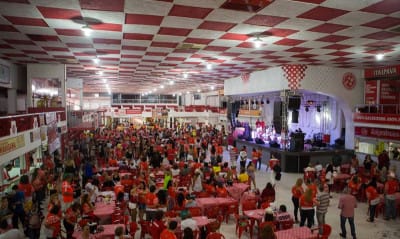 Samba school feijoadas are huge popular feasts, where anyone can participate easily. Between October and February, these events take place monthly in nearly all of the most important samba schools in town. Since there are at least 12 such schools in Rio, between October and the week before the Carnival, there are opportunities to attend one of these practically every weekend.
Samba school feijoadas are huge popular feasts, where anyone can participate easily. Between October and February, these events take place monthly in nearly all of the most important samba schools in town. Since there are at least 12 such schools in Rio, between October and the week before the Carnival, there are opportunities to attend one of these practically every weekend.
The most difficult aspect of these events – with only two or three exceptions – is getting there. Usually, samba schools are headquartered deep inside communities far from Rio’s center, and it’s best to go with a guide or a local, mostly so as not to get lost on your way to the party (but also to avoid any unsafe pockets). But once inside the samba school, it’s all about joy! Old ladies make and serve the feijoada straight from enormous steaming vats, where the meats and beans have been stewing since the day before. Attendees can fill up while listening to and dancing with the world’s best samba percussionists. We can’t overstate this: attending a samba school feijoada is a once-in-a-lifetime experience.
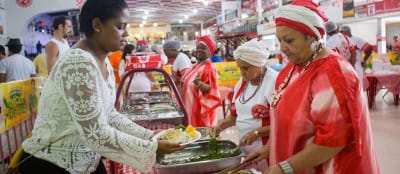 It’s difficult to say which samba school makes the best feijoada. Some say it’s Portela. Others say it’s Mangueira. Not by coincidence, those are the oldest and most traditional schools in Rio. The last Mangueira feijoada of the season has already taken place, but Portela will offer one in the first week of February. Two other schools will offer their last feijoadas before the parade this coming weekend.
It’s difficult to say which samba school makes the best feijoada. Some say it’s Portela. Others say it’s Mangueira. Not by coincidence, those are the oldest and most traditional schools in Rio. The last Mangueira feijoada of the season has already taken place, but Portela will offer one in the first week of February. Two other schools will offer their last feijoadas before the parade this coming weekend.
January 25, 2015
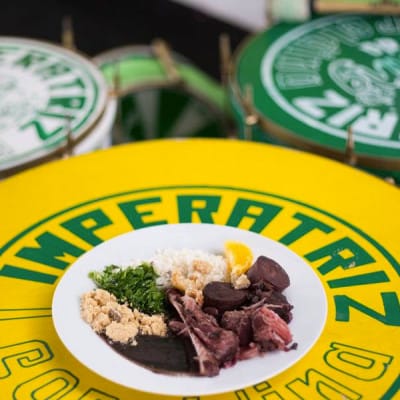 Imperatriz Leopoldinense Samba School
Imperatriz Leopoldinense Samba School
One of the most robust and vibrant samba schools in town, Imperatriz has won the title School of the Year several times in recent years.
Mocidade Independente de Padre Miguel Samba School
Another very traditional and big samba school. Its presentations are often considered the most audacious in the annual parades.
February 7, 2015
Portela Samba School
Its founders were also the founders of contemporary samba in Rio. The school is located in the neighborhood of Oswaldo Cruz, considered the “birthplace” of samba.
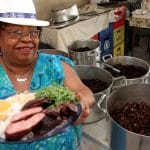 January 24, 2018 Beans & Beats
January 24, 2018 Beans & Beats
There’s one thing about Rio’s gastronomy that just about everyone can agree on: […] Posted in Rio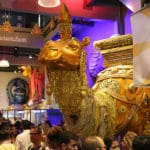 October 31, 2017 Baródromo
October 31, 2017 Baródromo
Carnival in Rio is one of the world’s best parties, and for good reason. There are the […] Posted in Rio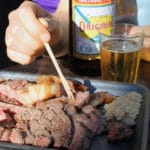 September 20, 2017 Praticità Carnes
September 20, 2017 Praticità Carnes
Where the British have a Sunday roast, Cariocas spend their Sunday afternoons at […] Posted in Rio
Published on January 23, 2015
Related stories
January 24, 2018
RioThere’s one thing about Rio’s gastronomy that just about everyone can agree on: feijoada, the glorious black bean and pork stew served with collard greens, toasted manioc flour, rice and oranges, can (and should be) eaten all year long. But during the Carnival season (a non-specified period that begins in early January and extends until…
October 31, 2017
RioCarnival in Rio is one of the world’s best parties, and for good reason. There are the extravagant costumes, the sweaty entertainers and revelers dancing to roaring samba music, and, most importantly, free flowing alcohol: Public inebriation, whether from drinking cheap beer or slurping spiked popsicles, is heavily encouraged. While nothing can top this pre-Lent…
September 20, 2017
RioWhere the British have a Sunday roast, Cariocas spend their Sunday afternoons at churrascos, Brazilian barbecues. Starting in the mid-afternoon, Rio’s residents typically gather in squares and street corners throughout the city and load spindly grills with slabs of meat. As the evening draws on, skewers and sausages are washed down with copious amounts of…
















